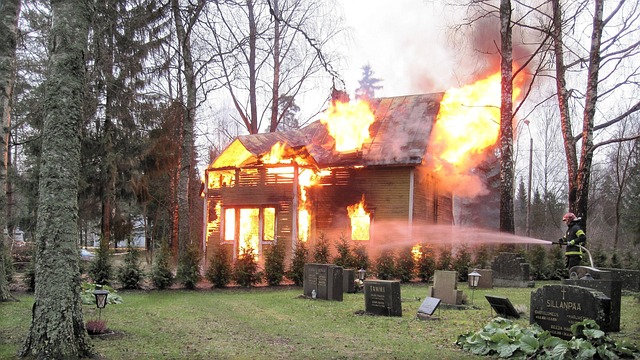In today's rapidly urbanizing world, wireless systems for urban living offer a revolutionary solution to fire and carbon dioxide (CO2) detection. Traditional stand-alone sensors leave coverage gaps and slow emergency responses, especially in complex urban landscapes. Wireless systems unify fire and CO2 monitoring through real-time data transmission, enabling faster detection, simultaneous alerts to authorities and residents, and prompt evacuation procedures. This enhances urban safety, particularly in high-rise buildings, by mitigating risks from fires and hazardous gas accumulations. Wireless systems overcome installation and maintenance challenges of traditional wired systems, offer flexibility for dynamic environments, promote energy efficiency, and are crucial for creating safer, more responsive urban living spaces.
In today’s rapidly growing urban landscapes, the need for advanced fire and carbon monoxide (CO2) detection systems is more critical than ever. With escalating urban population densities and an increase in high-rise buildings, the risk of fire hazards and toxic CO2 accumulation poses significant threats to public safety. Traditional systems often fall short, highlighting a pressing need for innovative solutions—wireless integrated fire and CO2 sensors. These cutting-edge devices offer unparalleled flexibility, real-time monitoring, and easier maintenance, revolutionizing urban living spaces. This article explores the growing demand, advantages, key features, implementation strategies, and future prospects of wireless systems in enhancing urban safety.
- The Growing Need for Smart Fire and CO2 Detection in Urban Areas
- – Urban population growth and high-rise buildings: increased risk of fire and carbon monoxide (CO2) hazards
- – Limitations of traditional fire and CO2 detection systems
- Advantages of Wireless Integrated Fire and CO2 Sensors
The Growing Need for Smart Fire and CO2 Detection in Urban Areas

In today’s rapidly urbanizing world, the need for smart and integrated fire and CO2 detection systems in urban areas has become increasingly pressing. Traditional methods often rely on disconnected, stand-alone sensors, leading to gaps in coverage and delayed responses during emergencies. As cities expand, becoming bustling metropolises with complex landscapes, the challenges of ensuring public safety intensify. Wireless systems for urban living are emerging as a game-changer, offering a unified approach to fire and carbon dioxide (CO2) monitoring.
By integrating these sensors, wireless networks can provide real-time data, enabling faster detection and response times. This is particularly crucial in large, labyrinthine urban settings where smoke or toxic gases might spread quickly unnoticed. Smart fire and CO2 detection technologies can alert authorities and residents simultaneously, facilitating prompt evacuation procedures and emergency services deployment. Such innovations are vital steps towards enhancing urban safety and mitigating the potential devastating impacts of fires and hazardous gas accumulations.
– Urban population growth and high-rise buildings: increased risk of fire and carbon monoxide (CO2) hazards

As cities continue to grow and urbanize, the challenges related to fire safety and hazard management become increasingly complex. The rapid population growth has led to a surge in high-rise buildings, which present unique risks compared to traditional low-rise structures. These tall skyscrapers not only pose challenges for emergency responders due to their vertical nature but also amplify the potential for fires and carbon monoxide (CO2) buildup. With every additional floor, the risk of fire spreading and the time it takes for rescue teams to arrive increases, making early detection crucial.
Wireless systems for urban living play a pivotal role in mitigating these risks. Integrating fire and CO2 sensors into these high-rise buildings can provide real-time data on potential hazards. This technology enables faster response times by alerting residents and emergency services promptly when a fire or elevated CO2 levels are detected. By embracing innovative solutions, urban areas can enhance their safety measures, ensuring the well-being of citizens living in these densely populated environments.
– Limitations of traditional fire and CO2 detection systems

Traditional fire and CO2 detection systems, while effective in many scenarios, face significant limitations when it comes to urban safety. In densely populated areas, these systems often rely on a network of wired sensors, which can be challenging to install, maintain, and expand, especially in historic or tightly built-up neighborhoods. This inflexibility hampers the ability to adapt to changing urban landscapes, leaving gaps in coverage and potentially endangering lives.
Furthermore, wired systems are susceptible to power outages and infrastructure damage, as seen during natural disasters or civil unrest. In contrast, wireless systems for urban living offer a more robust and adaptable solution. They eliminate the need for complex wiring, enabling quicker deployment and easier reconfiguration, which is crucial for effective fire and CO2 monitoring in dynamic urban environments.
Advantages of Wireless Integrated Fire and CO2 Sensors

Wireless Integrated Fire and CO2 sensors offer a revolutionary approach to urban safety, transforming traditional fire detection methods with their advanced capabilities. These sensors are designed to seamlessly blend into smart cities, providing real-time data on both fire and carbon dioxide levels. One of the key advantages is their ability to connect directly to central monitoring systems via wireless networks, eliminating the need for cumbersome wiring. This enables faster response times as emergency services can be alerted instantly upon detection, leading to more effective disaster management.
Furthermore, wireless systems for urban living present enhanced flexibility and scalability. They can be easily deployed in diverse environments, from high-rise buildings to underground tunnels, ensuring comprehensive coverage without the constraints of fixed wiring. This technology also promotes efficient energy utilization, as sensors can be powered by various energy harvesting methods, reducing maintenance costs and environmental impact. With their low power consumption and remote monitoring capabilities, these integrated sensors are a game-changer in creating safer and more responsive urban environments.
As urban populations continue to grow, the need for advanced fire and carbon monoxide (CO2) detection becomes increasingly critical. Traditional systems often fall short in high-rise buildings and dense urban areas, highlighting the significance of integrated fire and CO2 sensors as a game-changer. Wireless technology offers a revolutionary approach, providing real-time monitoring and early warning systems that can save lives and minimize damage. By deploying these innovative sensors, cities can enhance their safety infrastructure, ensuring a smarter and more sustainable urban living environment through cutting-edge wireless systems for urban living.
